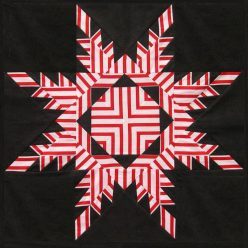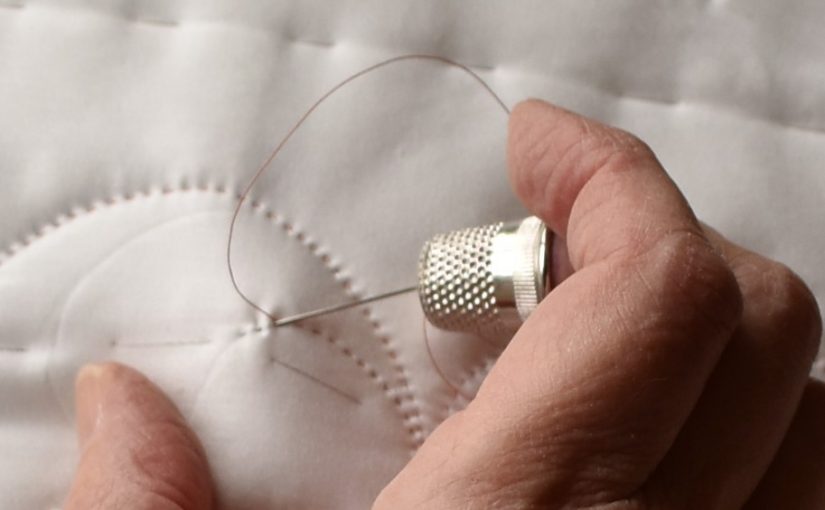Needles
The type of needle you use for quilting depends on which stitching technique you use. I stitch in the traditional way using the “rocking stitch”. More details about how to do this will be in the last post of this series, but you can see a short video of me stitching using this technique here:
For this technique, as you don’t actually hold the needle (just rock it up and down), a really short, stiff needle called a “between” (or simply a “quilting” needle) is used.
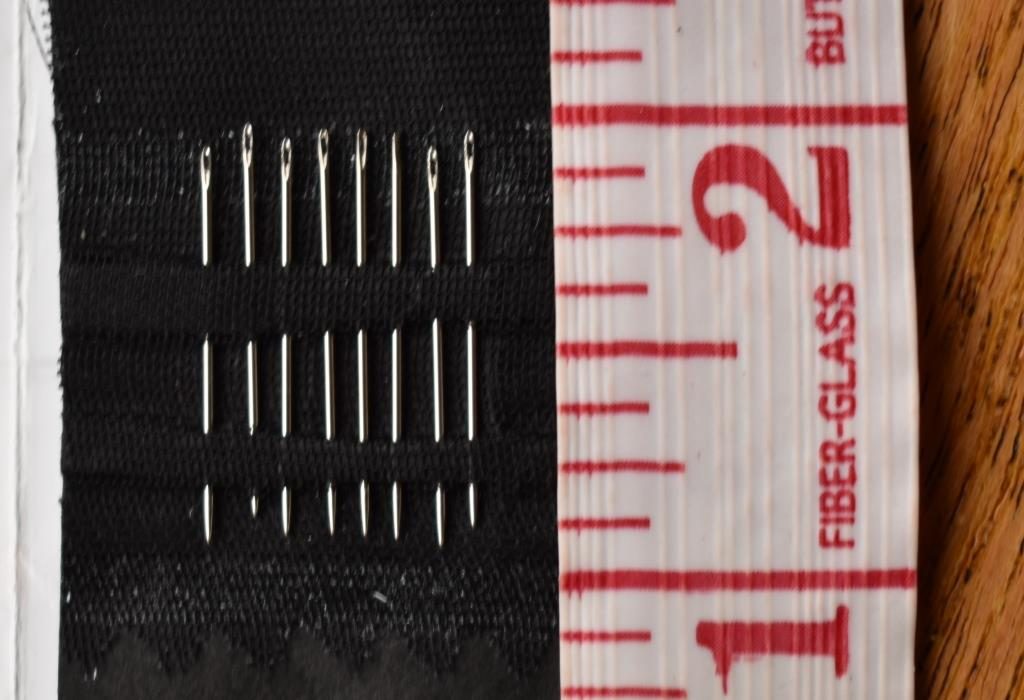
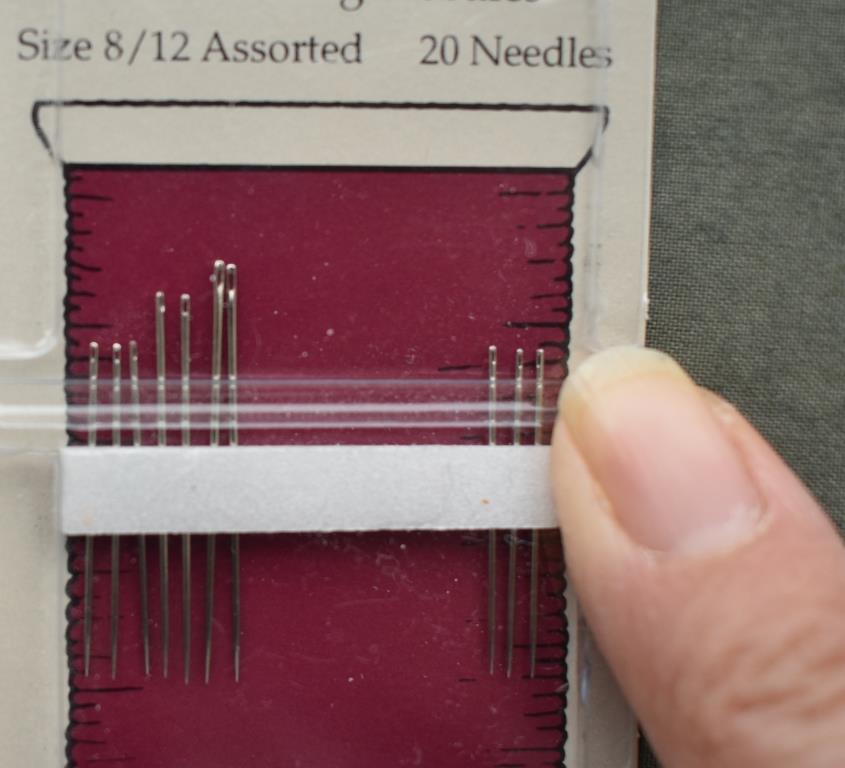
The smaller the needle, the bigger the sizing number.
A mixed pack is a good way to see which size suits you.
Why do “the experts” normally recommend the tiniest needles? Well, the smaller the needle, the less distance needs to be traveled by your finger up and down for each stitch, so in theory you can stitch more quickly. However, the tiny needles do take some getting used to, so I suggest that you start with size 8, and then perhaps go smaller if you want to try them.
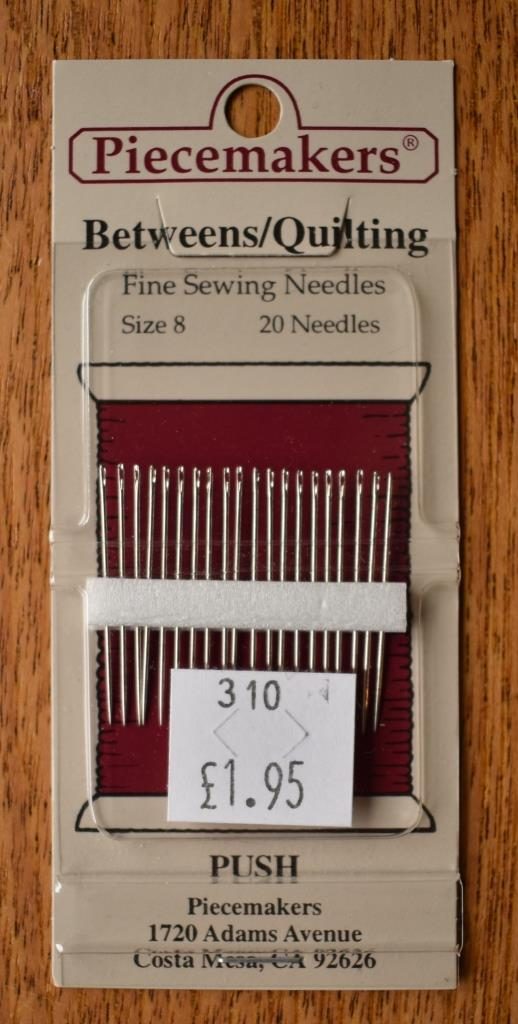
These are my favorite brand of needles – Piecemakers which are unfortunately not that easy to find in the UK.
They don’t bend (for me) and seem to stay sharp for a long time.
I get nice even little stitches with size 8, which many would consider relatively large sized between needles.
I have tried the smaller ones, but do find them more difficult to thread now that my eyes are not as young or sharp as they used to be – and as I am more interested in quality than speed, I don’t find any particular advantage in the tiny ones.
There are plenty of other popular brands available. I find that some feel a little “sticky” through the wadding. Try what is available locally and see which you prefer – don’t just go for the cheapest, as even the best quality are not expensive, and you can experiment a bit.
(Note that if you can’t get on with the rocking stitch, and decide to try stab stitching or lap quilting without a hoop, you will need longer needles which can be held, not betweens.)
Did you know that a needle eye is easier to thread from one side than the other? The hole is punched through during the manufacturing process, and so the eye surround is depressed in around the hole on this side. So, if you are struggling to thread a needle, turn it round, and try going through the other way.
Thimbles
Possibly one of the most controversial decisions! You use both hands when quilting; some quilters insist on protection for both, some only one, and some hate wearing anything.
Personally, I cannot hand-sew anything comfortably without a thimble on the finger that pushes the needle through the fabric.
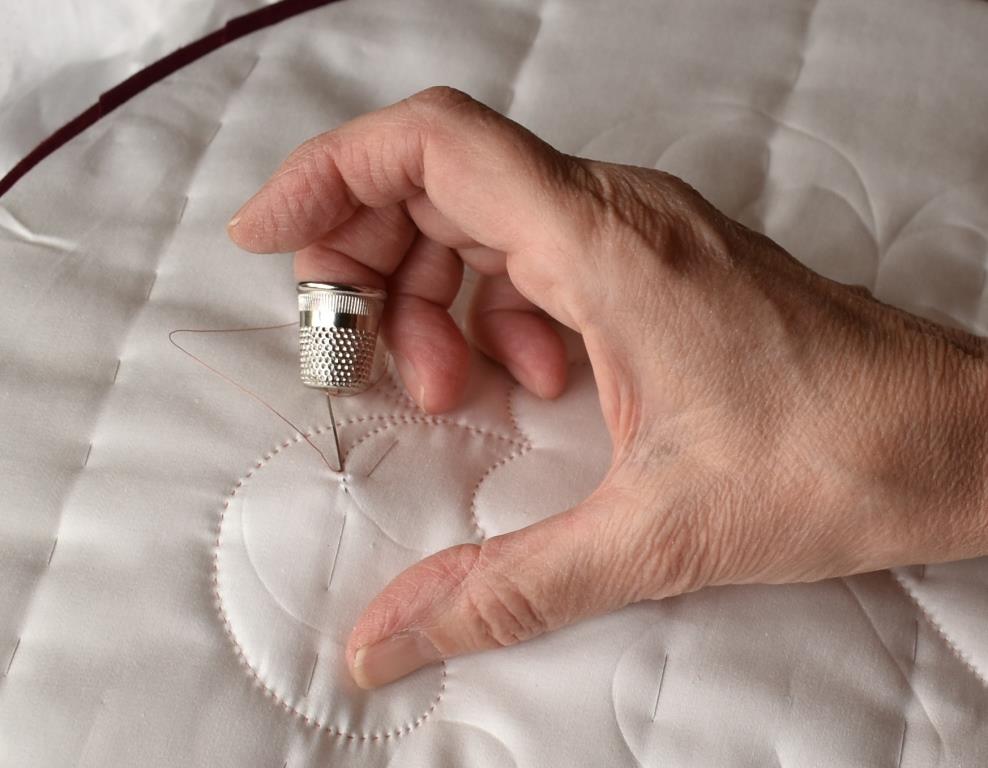
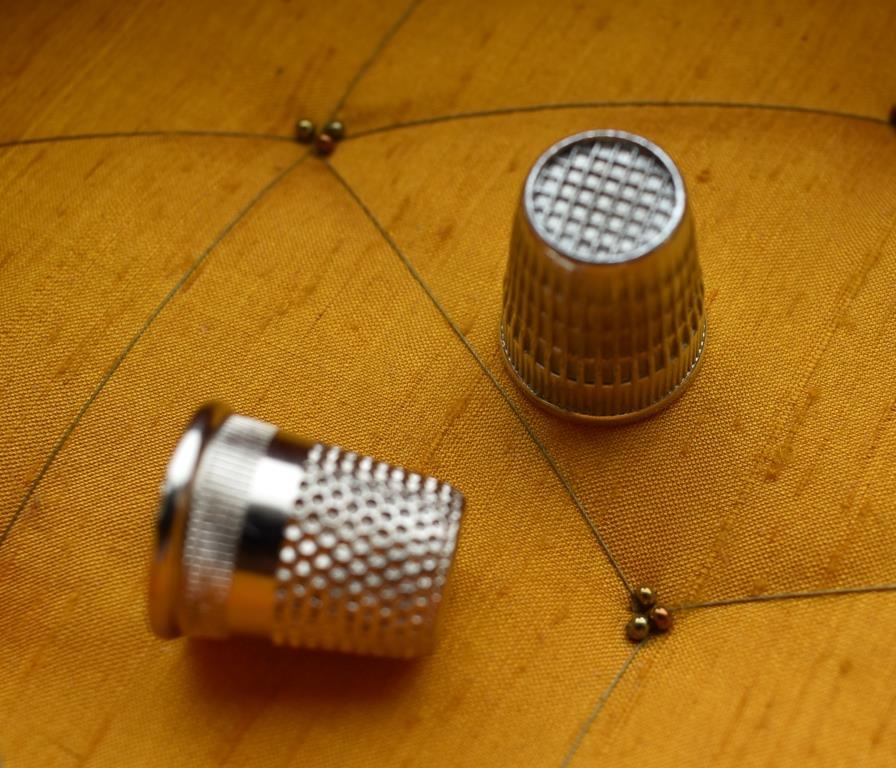
As the rocking stitch uses the end of the thimble to push the needle through at an angle, choose one that has a ridge around a flat, textured top, so the needle doesn’t slip off. As I don’t push with the side of the thimble, it doesn’t matter what sort of corrugations it has on the side – either of these are suitable.
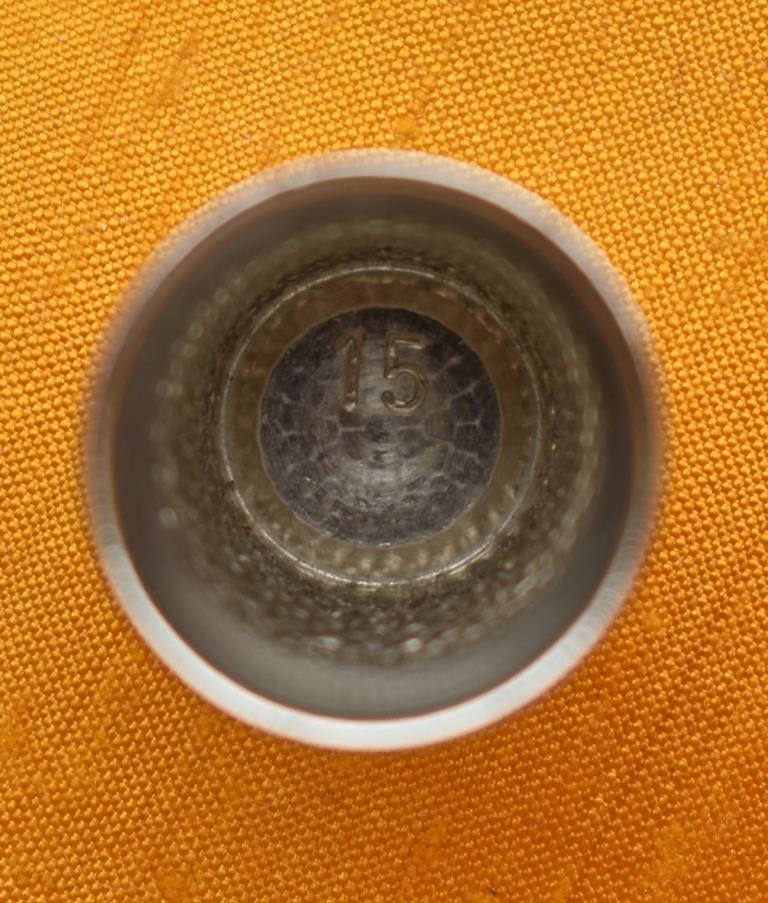
Good thimbles are available in various sizes, and the size is usually stamped inside – can you see this is a number 15?
You need to try several on to see which will comfortably stay on your finger. If your hands swell a little in hot weather, consider buying a spare one size larger.
Underneath finger
I don’t wear anything to protect the tip of my underneath finger, as I find it is essential to be able to feel the tip of the needle, to be sure that it has penetrated through to the back of the quilt sandwich. Because I hand quilt fairly regularly, I have built up a calloused area in the right place, so that forms a natural protection.
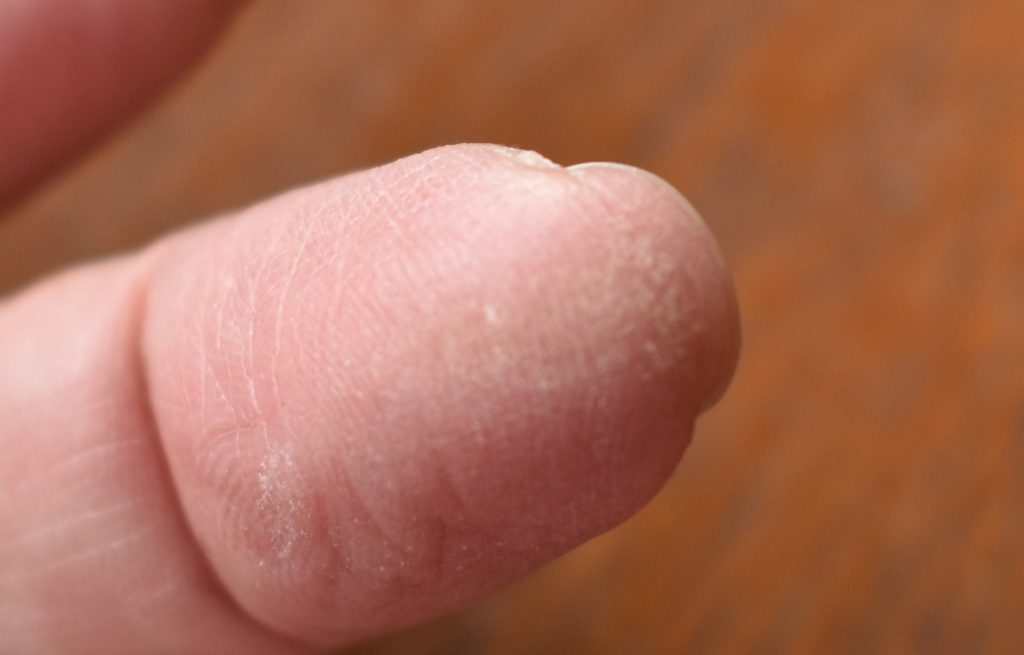
If you are intending to start hand quilting, I suggest that you wipe the tip of the middle finger of your underneath hand with surgical spirit for a few days before starting to stitch. This hardens the skin, and reduces the impact of the sharp needle point and the possibility of bleeding on your quilt. (I understand that the British term “surgical spirit” refers to a substance known as “rubbing alcohol” in the USA.)
Don’t stitch for too long at the first few attempts, but try for 10 -15 minutes every day or so for a week. Give your skin time to build up its own protection.
Some people prefer something more substantial, particularly if they have fragile skin or other health problems which mean that they bleed easily. There are various products available, such as leather thimbles, or small dots which you can stick onto your finger. I don’t really like the metal dots, as I find the needle tip slides around on the surface.
The equipment that you use to hand quilt can make it easier to obtain good results. Anything takes time to get used to – but if you continue to struggle, try making small changes to see whether that helps.
Quilting Basics
This page is part of a set about Quilting Basics.
If you would like to try out hand quilting on a small project, the Feathered Hearts download pattern from my online Shop would be suitable.
Click on the links to discover more:
